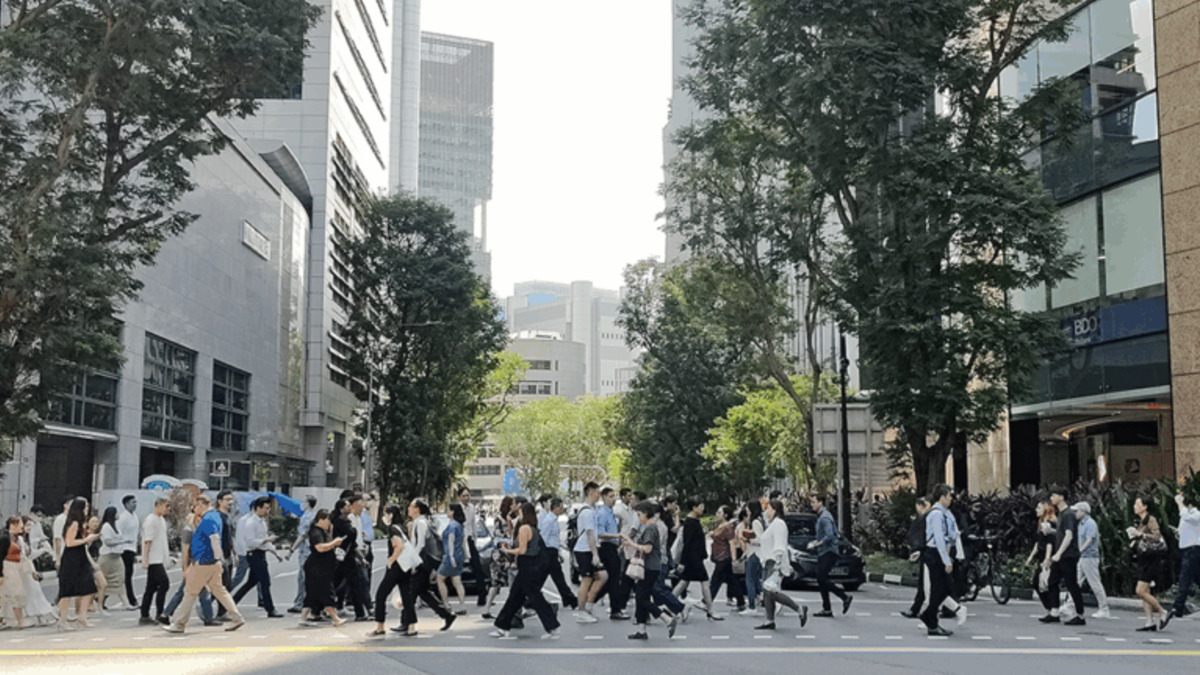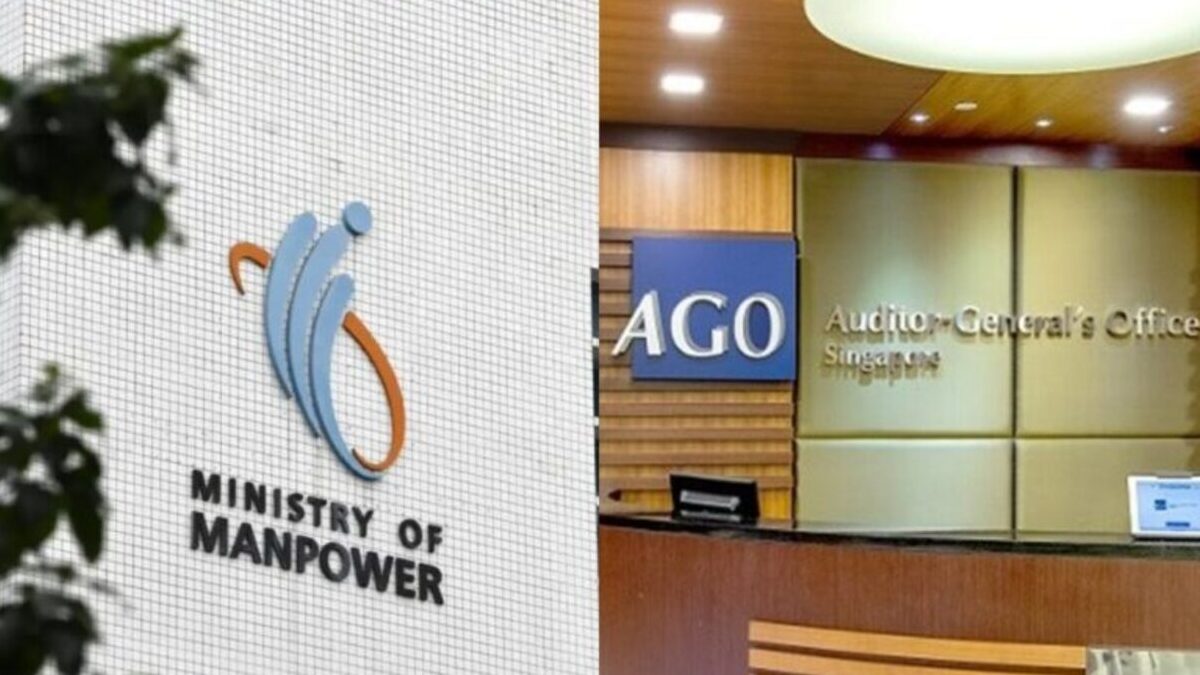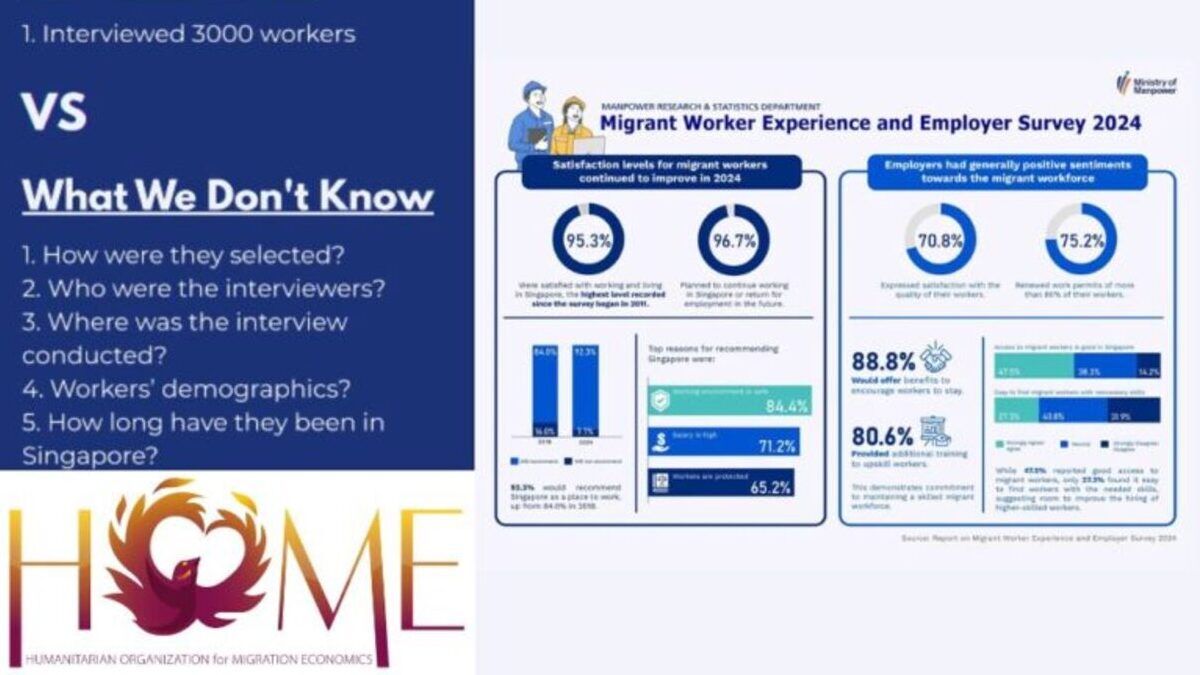Singapore’s labour market sees modest gains in Q2 2025, but youth joblessness rises
Singapore’s labour market expanded modestly in the second quarter of 2025, according to the Ministry of Manpower (MOM), but a closer look shows rising youth unemployment and cautious hiring sentiment among firms amid global headwinds.
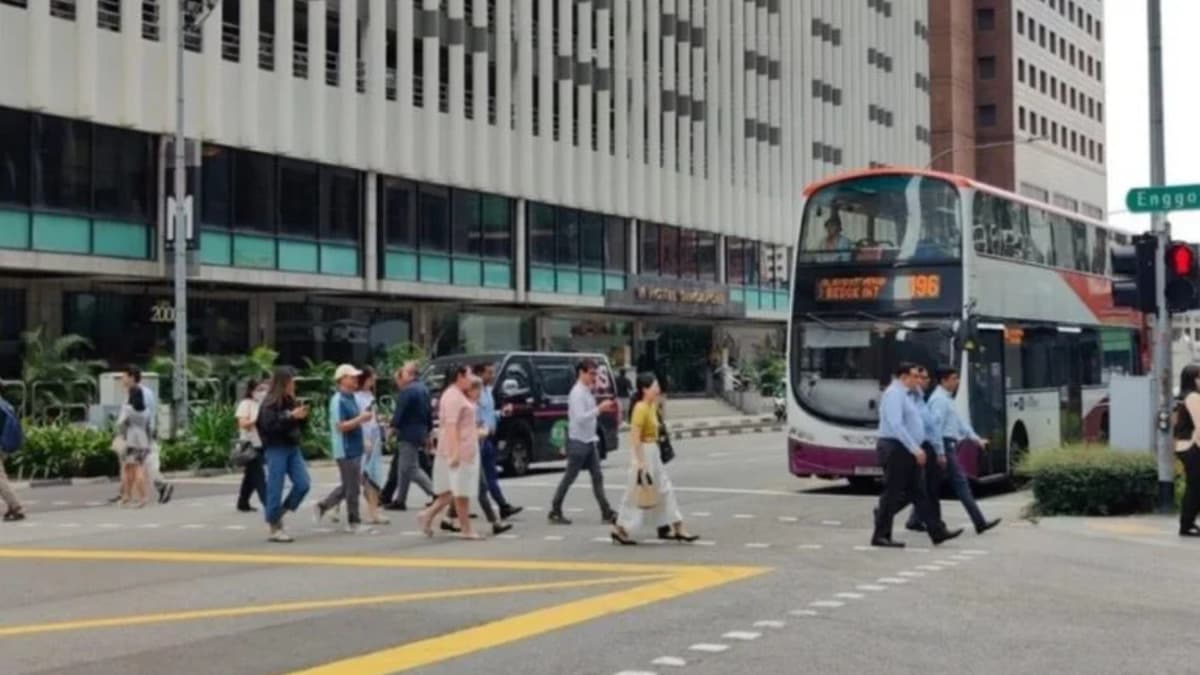
- Total employment rose by 10,400 in Q2 2025, with most gains coming from non-resident workers.
- Youth unemployment increased to 5.7%, the first uptick this year, raising concerns about graduate job prospects.
- Fewer firms plan to hire or raise wages, signalling growing caution amid global economic challenges.
Singapore’s labour market posted modest gains in the second quarter of 2025, but underlying data suggests growing pressures on young graduates and a more selective hiring environment.
According to the Labour Market Report released by the Ministry of Manpower (MOM) on 17 September, total employment increased by 10,400 in Q2, up from 2,300 in the previous quarter.
Of this, resident employment — which includes both Singaporeans and permanent residents — rose by 2,600, while non-resident employment grew by 7,800, largely in construction and transport roles filled by Work Permit holders.
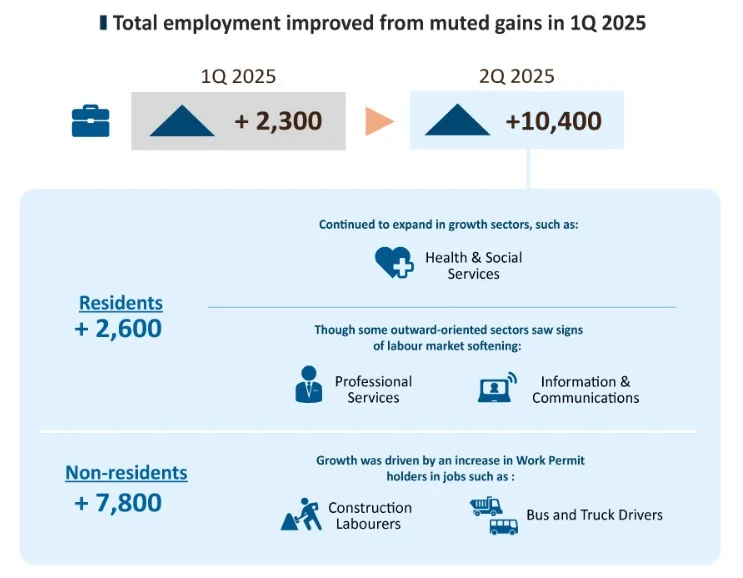
This follows a broader population expansion trend. In 2024, Singapore granted citizenship to 24,000 people and permanent residency to 35,000 others. The figures reflect a steady inflow into the resident labour force.
While MOM emphasised that the labour market “remains resilient,” some analysts note that job creation for residents has not fully kept pace with population growth.
Youth unemployment ticks up
Unemployment among residents under 30 rose from 5.4% in March to 5.7% in June — the first increase this year.
MOM stated that this remains within the pre-recessionary range of 4.9% to 6.1%. However, the rise has fuelled anxiety among fresh graduates about limited openings and competition for entry-level roles.
Degree holders also experienced a slight increase in unemployment, from 2.8% to 2.9%, contrasting with declines in other education groups.
“The labour market is still stable, but these shifts in the younger demographic are worth watching,” said Ang Boon Heng, Director of MOM’s Manpower Research and Statistics Department.
He added that long-term unemployment for those under 30 improved slightly, from 1.2% to 1.1%, indicating that prolonged joblessness remains limited.
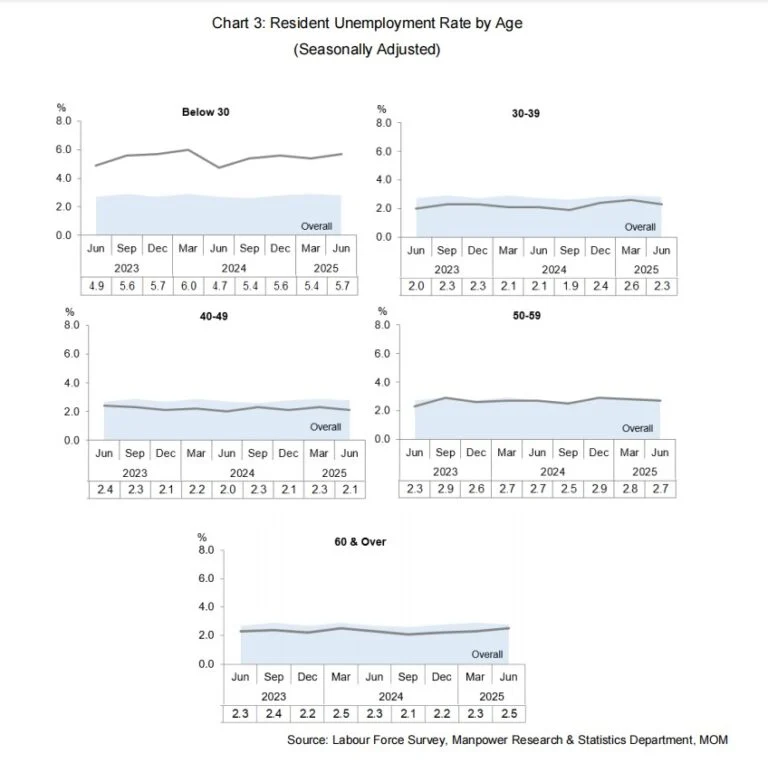
Fewer firms hiring, more eyeing layoffs
Job vacancies declined from 81,100 in March to 76,900 in June, marking a broad-based fall across multiple sectors.
This lowered the ratio of vacancies to unemployed persons to 1.35 — the weakest since September 2024, though still reflecting more job openings than jobseekers.
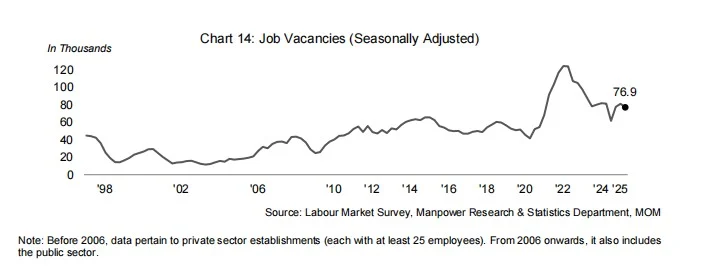
Forward-looking indicators pointed to rising caution among employers:
-
The proportion of firms planning to hire in Q3 fell to 43.7% from 44.0%.
-
The share expecting to raise wages slipped to 22.4%, down from 24.4%.
-
Meanwhile, the number planning redundancies edged up from 1.6% to 1.9%.
MOM attributed the caution to global headwinds, including the effects of the US Liberation Day tariffs announced in April, which have impacted sectors such as manufacturing, professional services and transport.
Retrenchments steady, but re-entry slows
Retrenchments dipped slightly for the second consecutive quarter — from 3,590 in Q1 to 3,540 in Q2 — with most companies citing business restructuring rather than recessionary pressures.
However, fewer retrenched workers managed to secure new jobs quickly.
The rate of re-entry into employment fell to 56.3%, down from 60.6% previously.
The re-entry rate was particularly low among seniors aged 60 and above, as well as non-PMET workers, signalling rising difficulty in job transitions for these groups.
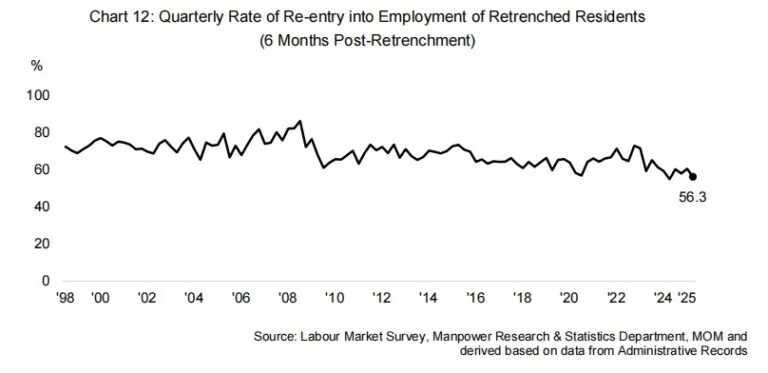
More on short work weeks and temporary layoffs
The number of employees placed on short work-week or temporary layoff arrangements rose slightly, from 570 in Q1 to 620 in Q2.
These were mainly in wholesale trade, transportation and accommodation sectors.
Still, MOM said the data does not yet indicate widespread manpower slack, noting that most firms are adopting a “wait-and-see” approach amid economic uncertainty.
(Source: Labour Market Survey, Manpower Research & Statistics Department, MOM)
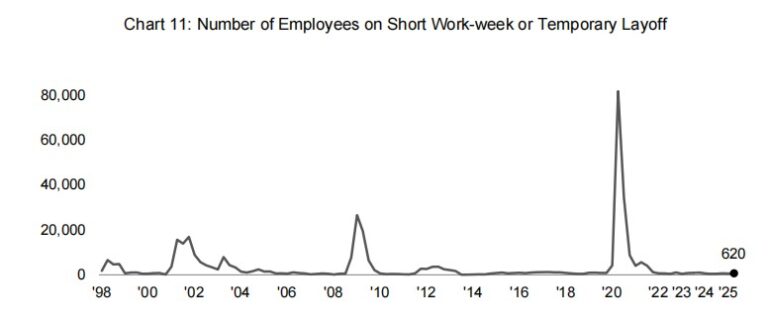
Graduate traineeships launched amid limited vacancies
To support fresh graduates, the government announced the introduction of Graduate Industry Traineeships, with up to 800 placements across public and private sectors starting in October 2025.
The initiative complements 4,270 entry-level PMET vacancies identified by MOM in June, mainly in:
-
Public administration and education
-
Health and social services
-
Construction
-
Information and communications
However, with 35,000 new permanent residents granted in 2024, some analysts note that the number of available entry-level jobs may not match rising demand.
This is especially true when factoring in status conversions that do not represent new employment creation.
Conclusion: stable on paper, but more nuanced in reality
While Singapore’s overall employment figures present a stable picture, analysts caution that the headline growth masks underlying shifts.
In particular, the steady inflow of new residents — many already employed — may be skewing employment statistics, complicating assessments of true job growth for Singapore citizens.
“The overall picture remains one of cautious optimism,” said Manpower Minister Dr Tan See Leng.
“But we are closely monitoring developments, especially in light of global uncertainties.”
As Singapore’s workforce matures and the population composition evolves, analysts say more granular data — including citizen-specific employment trends — may be essential to understanding future labour dynamics and ensuring opportunities remain accessible to younger workers.

